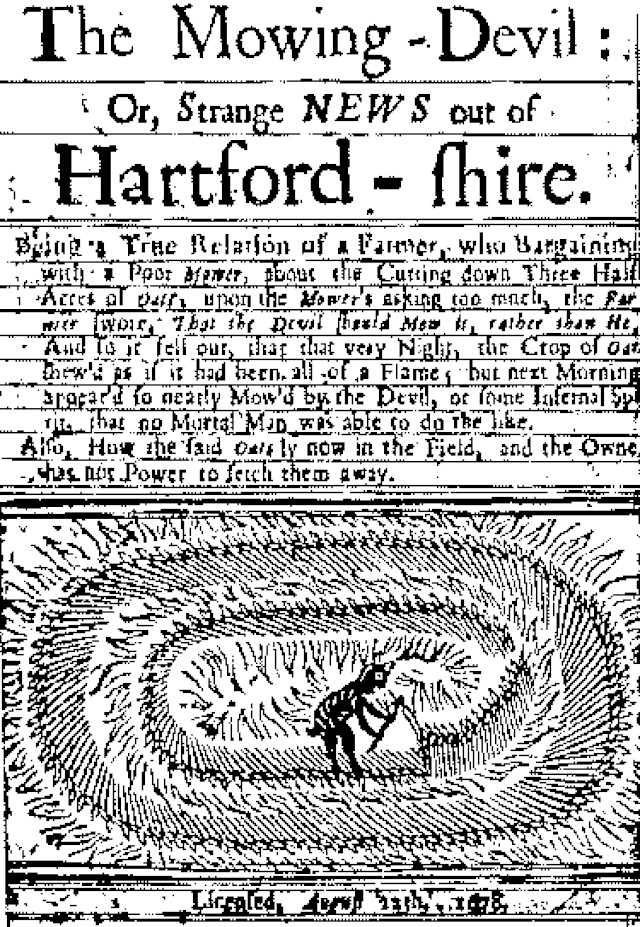The term, “mowing devils” refers to a historical phenomenon and a popular folklore story from England. The tale of the mowing devils dates back to the 17th century and involves a depiction of circles in crops.
According to the story, in 1678, in the county of Hertfordshire, England, a farmer refused to pay the high price demanded by a labourer to mow his field. The farmer claimed that the amount was excessive, and he would rather have the devil himself do the work. That night, the farmer’s field was mysteriously mowed in a neat, intricate pattern.
This peculiar event attracted attention, and news of the “mowing devils” quickly spread. The story was often depicted in pamphlets and engravings, which portrayed the devil or demons mowing the field. These illustrations often showed supernatural creatures with scythes working through the night.
Crop circles
The story of the mowing devils has often been connected to the modern phenomenon of crop circles. Crop circles are intricate patterns that appear in fields, typically in crops like wheat, barley, or corn, where the plants are flattened in a circular or geometric design.
While the mowing devils story predates the modern crop circle phenomenon by several centuries, there are similarities between the two. Both involve the creation of intricate patterns in fields, often overnight and seemingly by unknown forces. These patterns have sparked curiosity and speculation about their origins.
In the context of crop circles, some people have drawn parallels to the mowing devils story as a way to connect the historical folklore to the modern phenomenon. The idea is that the crop circles could be interpreted as contemporary manifestations of the same supernatural or mysterious forces depicted in the mowing devils tale.
The phrase “There are more things in heaven and Earth, Horatio, than are dreamt of in your philosophy” is a famous line from Shakespeare’s play Hamlet. It reflects the idea that there are unknown or unexplained phenomena beyond what our current understanding or knowledge can comprehend.
Although mainstream science is very dismissive of crop circles, and believe that they are all man-made or the work of the elements, there are a growing number of professionals and non-professionals around the world who believe there is more at play.
